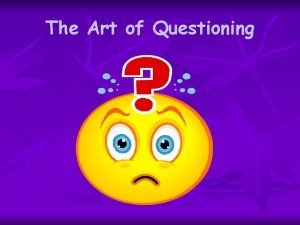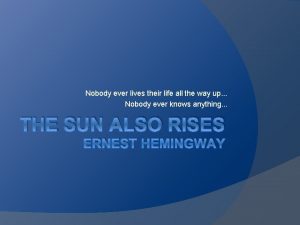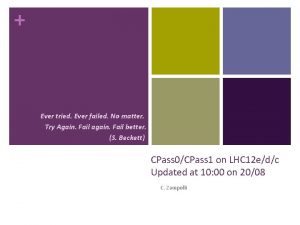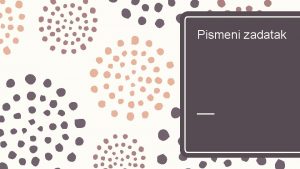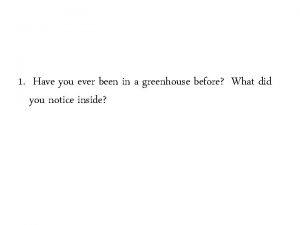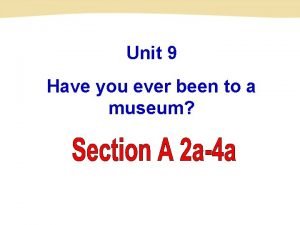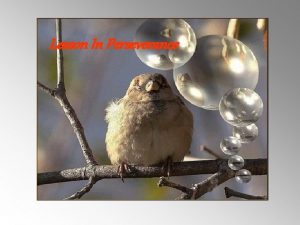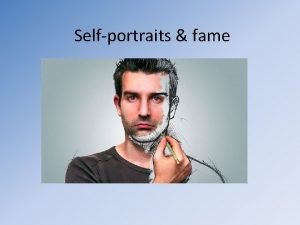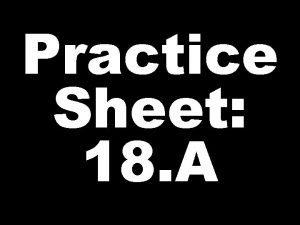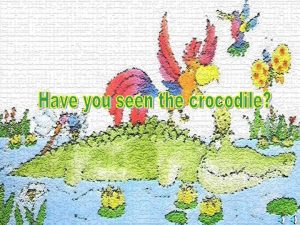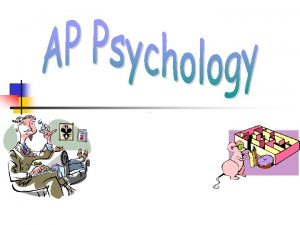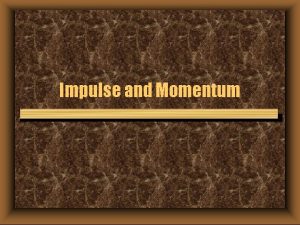DESIGN MANUFACTURE AESTHETICS Have you ever wondered why
































- Slides: 32

DESIGN & MANUFACTURE AESTHETICS

Have you ever wondered why some things are considered beautiful and others ugly? Have you ever seen something you thought was attractive but friends said they didn't like? A study of Aesthetics will help us to understand these reactions and will explain why some things are nicer to look at than others.

Beauty is very much concerned with feelings. Most people would agree that this puppy is attractive and pleasant to look at. It looks friendly and playful and being young it makes you want to protect it. Because of these nice feelings we consider the puppy to be beautiful.

We feel comfortable with things that we understand but disturbed by the strange or unknown. A dark wood can be a frightening place. Our imagination can make us think that we are in danger. As soon as we are back in cosy, familiar surroundings we feel safe and comfortable.

• Let's look at some of the basic elements of what we see and the effect that looking and seeing can have on us. • The spot or dot is the simplest unit. • By putting one spot on a background we immediately indicate position because it’s there and that position has an effect on the space around it. • The spot divides the area horizontally and vertically.

• When we put 2 spots on a background the space between the spots becomes important. • A measurement is indicated. • The eye links the 2 spots with a line thus implying direction.

• Random spots can confuse us because the eye wanders about looking for some meaning or pattern. • The confusion is even worse if the spots are of different sizes.

• A line can be thought of as a chain of dots all joined together. • The line indicates position and direction; the eye moves along the line to find out where it is leading.

• Different lines can produce different feelings. • A thick line is associated with boldness, a straight line with strength and a zigzag with excitement.

• Groups of parallel straight lines can suggest rhythm. • The repetition of the same lines even though the spaces vary, seems to produce a visual message which draws on our experience of sound rather than sight.

• A horizontal line is associated with passive feelings. • Could this be because we associate the horizontal with stability and lying down? • Things that lie down are restful and static-there is no suggestion of movement.

• A vertical line is also static but it demands more attention. • It stops our normal horizontal eye movement and can dominate longer horizontal lines. • Perhaps we think it's more important because large living things, humans and trees-stand erect.

• Horizontal and vertical lines together introduce the idea of balance. • A person standing straight with both feet firmly on level ground is perfectly balanced.

• Our sense of balance means that we can easily tell if something is out of true and looks as if it might topple over.

• Because of our inbuilt sense of balance a sloping line can be disturbing unless a support of some kind is provided.

• Curved lines can appear to wander aimlessly but if we look closely we can see that each part of the curve suggests movement in a particular direction. • Curves can also suggest smoothness and softness.

• A straight line from A to B looks unstable but a curved line can restore a sense of balance. • This curved line can imply balanced distribution around the vertical line.

• Regular geometric shapes are static because they are balanced-equal lengths and equal angles. • The circle suggests an equal distribution of pressure over the whole surface and this again makes it appear to be balanced and static.

• When the regular shapes are distorted the balance is disturbed and the shapes are no longer static. • We can sense a directional thrust. • This is a technique of visual styling much used by cartoonists and car designers.

• A geometric shape can give different impressions depending on its position. • One triangle looks stable - it is safely supported on its horizontal base. • The other triangle is unsupported and looks unstable.

• When we see a sphere in isolation it may well appear to be static.

• Yet, when we add a sloping line we get an impression of movement. • This is because we know that a ball will roll down a hill and this knowledge makes us see movement which is not really there.

• Another important aspect of aesthetics is unity. • If one part of a scene is totally unrelated to another our senses become disturbed and sometimes confused. • This scene lacks unity.

• Our need to have order, balance and unity is based on our experience of life and the feelings of unease produced if any of these things are missing. • However, if we have complete order the result can be boring and do nothing to excite us. • The introduction of some variety, provided that a degree of order, balance and unity is retained can be much more dynamic and interesting.

• When we looked at the single spot the background became divided into different areas. • This introduces the idea of proportion which is the relationship of one size or area to another. • If the spot is moved then the proportions are changed.

• If a group was asked to divide the line A into pleasing proportions, some might choose to place the mark in the middle as at B, giving equal proportions. • Others might choose C but the majority usually find D the most interesting and pleasing. This particular proportion occurs very often in nature and this probably explains why most people find it attractive.

• The Greeks used this proportion in many of their buildings and called it the Golden Section. • The total length of the line divided by the larger part is equal to the larger part divided by the smaller.

• Colour can affect us in many ways and this tends to be a very personal matter. • It is generally accepted that blues are thought of as being cold and reds as being warm. • Could this be because blue is associated with the sea and sky and red with the sun and fire? • When choosing a colour scheme we choose adjacent colours if we want harmony and opposite colours if we want contrast.

• What then is Aesthetics? • It is a human reaction to what we see. It is concerned with why some things are more pleasing to look at than others.

• By applying the basic principles of Aesthetics to design work we should be able to produce designs that look good. • We will understand why decisions about ORDER, BALANCE, UNITY, RHYTHM, PROPORTION and COLOUR have to be made. • In making these decisions remember that Aesthetics is relevant to everyone - we all have feelings and we can all make sensible judgements.

To finish we must keep in mind a couple of important points before the design of a product. Consumers will always go through two distinct stages when picking a product: The First Scan – this stage is vital if it does not grab our attention it will not get a second look, it has to have striking features, patterns, colours, shapes and features. The Focus In – we will then focus in and gain a deeper understanding of the product. There are certain reasons a consumer will buy a product: § Have seen it before and liked it (familiar) § It works well and is easy to use § Reflects their style and personality § Not sure why they just like something about

THE END CLICK THE ARROW TO RESTART PRESENTATION
 Have you ever wondered why some people
Have you ever wondered why some people Have you ever wondered
Have you ever wondered Do you ever wonder why questions
Do you ever wonder why questions For many years people have wondered
For many years people have wondered Hey hey bye bye
Hey hey bye bye Higher design and manufacture
Higher design and manufacture Ever ancient ever new
Ever ancient ever new Ever ancient ever new
Ever ancient ever new Have you ever looked
Have you ever looked Ever tried ever failed no matter
Ever tried ever failed no matter Have you ever done something dangerous
Have you ever done something dangerous Facts about shoplifting
Facts about shoplifting Have you ever read
Have you ever read Have you ever experienced culture shock
Have you ever experienced culture shock Have you ever climbed a mountain
Have you ever climbed a mountain Chipper chopper joe
Chipper chopper joe Have you ever ridden a camel
Have you ever ridden a camel Have you ever climbed a mountain?
Have you ever climbed a mountain? Have you ever seen a “greenhouse”?
Have you ever seen a “greenhouse”? Have you seen this area before?
Have you seen this area before? Have you ever watched people
Have you ever watched people Example of stanza in poem
Example of stanza in poem How are you
How are you Have you ever been to an amusement park
Have you ever been to an amusement park Have you ever seen a penguin come to tea
Have you ever seen a penguin come to tea Have you ever looked in the mirror
Have you ever looked in the mirror Have you ever looked in the mirror
Have you ever looked in the mirror Have i ever let you down the glass castle
Have i ever let you down the glass castle Have you ever thought about questions
Have you ever thought about questions Have you ever been to a museum
Have you ever been to a museum Have you ever met a famous person
Have you ever met a famous person Have you ever ridden a horse before in asl
Have you ever ridden a horse before in asl Crocodile plural
Crocodile plural


